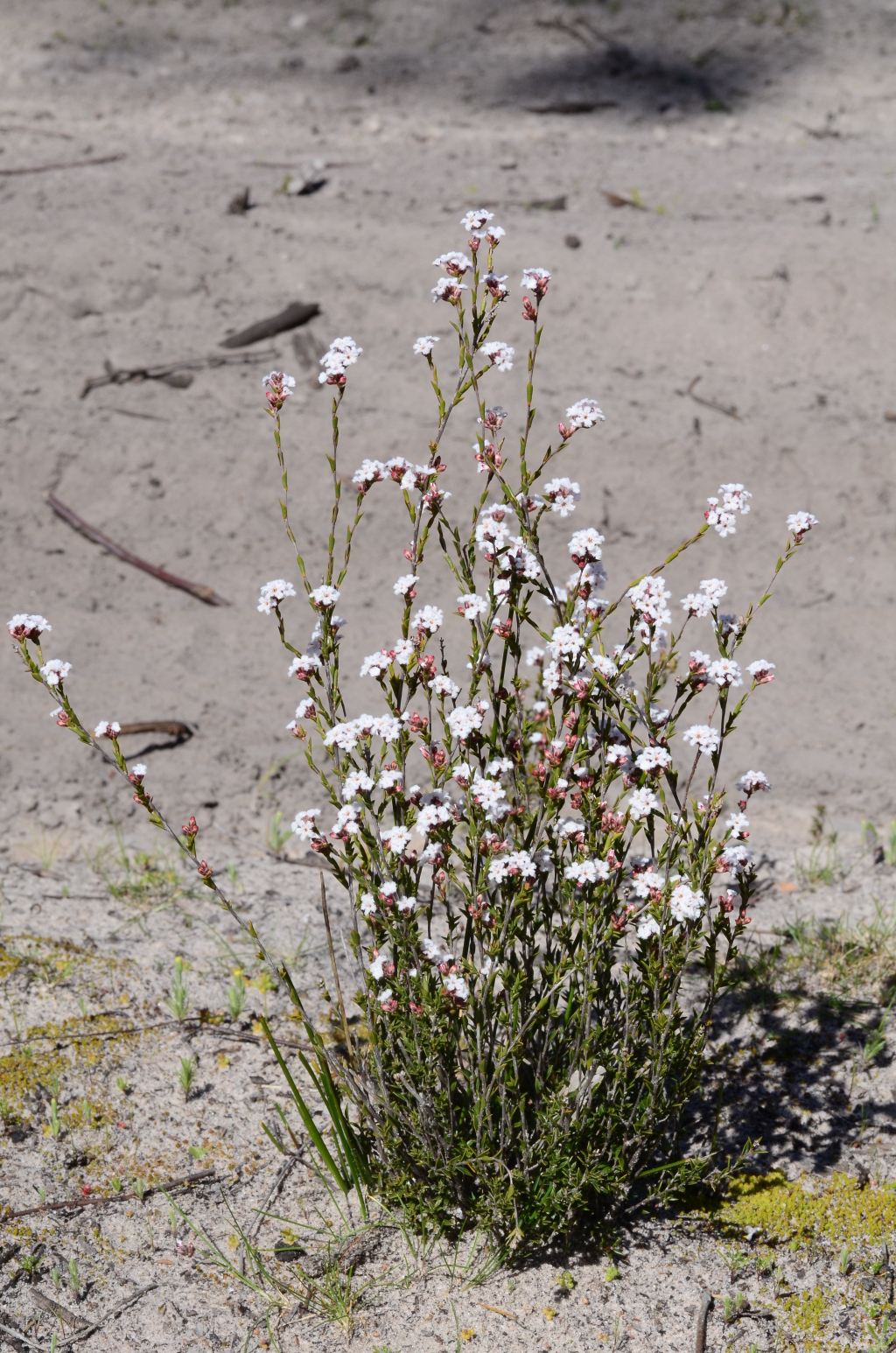Leucopogon virgatus
(Labill.) R.Br. Common Beard-heathErect to decumbent shrub, to c. 50 cm high; branchlets glabrous to subvelvety. Leaves erect, narrowly lanceolate to ovate, 2–25 mm long, 1–5 mm wide, narrowly acuminate to acute, concave, dull, glabrous to subvelvety, concolorous, longitudinally 3–7-veined, below, the outer veins usually branched; margins entire to sparsely serrulate. Flowers white (pink in bud), 3–4 in terminal or upper-axillary spikes 4–10 mm long, the spikes often crowded near branch-tips; bracteoles ovate, c. 1 mm long, obtuse, glabrous to minutely ciliate along the thickened midrib; sepals ovate, 2–2.5 mm long, broadly acute or obtuse, glabrous or shortly pubescent toward the apex; corolla 3–3.5 mm long, lobes equal to tube or slightly longer, acute, densely bearded within; anthers with very short, recurved, sterile tips; ovary glabrous, 3–5-locular, style c. 0.2–0.5 mm long. Fruit c. spherical, c. 2 mm diam.
LoM, MuM, Wim, GleP, Brid, VVP, VRiv, MuF, GipP, OtP, WaP, Gold, CVU, GGr, DunT, NIS, EGL, EGU, WPro, HSF, HNF, OtR, Strz, MonT, VAlp.
Choristemon humilis H.B. Will. is now considered to be a freak variant of L. virgatus. It was collected twice in the 1920s (apparently from the same plant) in the northern Brisbane Ranges. Despite exhaustive searching in virtually unaltered vegetation at the original locality, plants referable to C. humilis have not been relocated. Specimens of C. humilis are identical to L. virgatus except for the staminal filaments being attached at the base of the corolla. Freak forms of other epacrids have been observed with similar abnormal stamen development.
2 variable varieties, both in Victoria. Plants of intermediate appearance occur in the narrow zone where the 2 varieties overlap.
Powell, J.M.; Walsh, N.G.; Brown, E.A. (1996). Leucopogon. In: Walsh, N.G.; Entwisle, T.J., Flora of Victoria Vol. 3, Dicotyledons Winteraceae to Myrtaceae, pp. 494–509. Inkata Press, Melbourne.
 Spinning
Spinning

